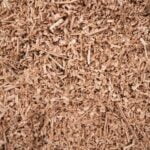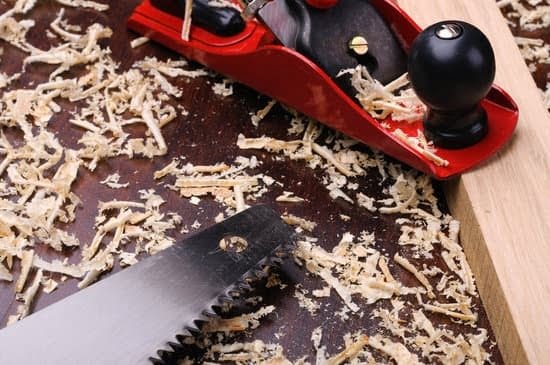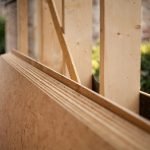Plywood is a versatile and widely used material in woodworking projects, but not all woodworkers fully understand its variations and applications. In this article, we will delve into the different types of plywood, how to choose the right grade for your project, determining the right dimensions, as well as the advantages and disadvantages of using plywood.
We will also cover essential techniques for cutting and finishing plywood, tips for choosing the right plywood for specific projects, and best practices for maintaining and caring for plywood.
Plywood is a type of engineered wood made from thin layers of wood veneer or plies that are glued together to form a strong and durable sheet. It is commonly used in construction, furniture making, cabinetry, and various DIY projects. Understanding its characteristics and variations is crucial for any woodworker looking to work with this material.
By the end of this article, woodworkers will have a comprehensive understanding of plywood, enabling them to make informed decisions when choosing and working with this material in their woodworking projects. Whether you are a novice or an experienced woodworker, having a solid grasp of what plywood is and how it can be utilized will undoubtedly enhance the quality of your craftsmanship.
Different Types of Plywood
Plywood is a versatile material that comes in various types, each suited for different applications. Understanding the differences between these types of plywood is essential for woodworkers to ensure the success of their projects. One of the most common types is softwood plywood, which is made from softwood veneers such as pine or cedar. It is ideal for structural applications such as sheathing and subflooring.
Another type is hardwood plywood, which is made from higher quality hardwood veneers like oak, birch, or maple. This type of plywood is often used in furniture making and cabinetry due to its attractive finish and durability. Marine plywood, on the other hand, is specially engineered to withstand moisture and humidity, making it perfect for boat construction and outdoor projects.
Aside from these, there are also specialty plywood types such as decorative plywood, overlaid plywood, and structural insulated panels (SIPs) that cater to specific needs of woodworkers. Each type has its unique characteristics and uses, so understanding these variations will help woodworkers choose the right plywood for their specific project needs.
Lastly, understanding the different applications where each type of plywood excels in can be beneficial to woodworkers. For example, knowing that marine plywood has superior resistance to moisture makes it an ideal choice for outdoor furniture projects or kitchen cabinets where exposure to water or high humidity may occur.
Similarly, being aware that decorative plywood offers a wide range of finishes can help woodworkers achieve the desired aesthetic look for their furniture pieces. By understanding the variations and applications of different types of plywood, woodworkers can make informed decisions when it comes to choosing the right material for their projects.
| Plywood Type | Applications |
|---|---|
| Softwood Plywood | Structural uses such as sheathing and subflooring |
| Hardwood Plywood | Furniture making and cabinetry |
| Marine Plywood | Boat construction and outdoor projects |
| Decorative Plywood | Wide range of finishes for aesthetic look in furniture making |
| SIPs (Structural Insulated Panels) |
Understanding Plywood Grades
When it comes to choosing the right plywood for your woodworking project, understanding plywood grades is essential. Plywood is available in different grades, each of which has specific characteristics and suitable applications. This section will delve into the importance of understanding plywood grades and how woodworkers can choose the right grade for their projects.
What Are Plywood Grades?
Plywood grades denote the quality and appearance of the plywood panels. The grading system provides a standardized method for manufacturers and consumers to communicate the quality of the plywood. Grades are determined based on factors such as the number of blemishes, consistency of layers, and overall appearance. Common plywood grades include A, B, C, and D, with A being the highest quality with minimal blemishes and D being more flawed in appearance.
Choosing the Right Grade for Your Project
When selecting a plywood grade for your woodworking project, it’s crucial to consider the specific requirements of the project. For high-end furniture or cabinetry where appearance is important, a higher-grade plywood like A or B may be more suitable.
On the other hand, for structural applications where appearance is less critical, a lower-grade plywood such as C or D may be sufficient. Understanding how each grade correlates to strength and appearance will help woodworkers make an informed decision.
Considerations for Specialized Projects
In some cases, specialized projects may require specific types of plywood grades. For example, marine-grade plywood is specially designed to resist moisture and is commonly used in boat building or outdoor furniture construction. Additionally, exterior-grade plywood is treated to withstand outdoor elements and is suitable for outdoor construction projects such as decks or fences. It’s important to understand these specialized grades and their unique properties when embarking on projects that require them.
By having a solid grasp of plywood grades and their respective qualities, woodworkers can confidently select the right grade of plywood that aligns with their project requirements.
Plywood Thickness and Size
When it comes to choosing plywood for your woodworking project, understanding the right thickness and size is crucial. The plywood thickness and size you select will directly impact the strength, stability, and overall quality of your finished piece. Here are some key considerations to keep in mind when determining the right dimensions for your project.
Understanding Plywood Thickness
Plywood comes in various thicknesses, typically ranging from 1/8 inch to 1 inch. The thicker the plywood, the more durable and strong it will be. When selecting the appropriate thickness for your project, consider the intended use of the final product.
For example, if you are building a sturdy workbench, you will want to opt for a thicker plywood to ensure it can support heavy loads. On the other hand, if you are creating decorative shelving, a thinner plywood may suffice.
Choosing the Right Plywood Size
In addition to considering thickness, woodworkers also need to think about plywood size when planning their projects. Standard plywood sheets come in 4×8-foot dimensions, but smaller sizes are also available for convenience. It’s important to take accurate measurements and plan cuts carefully to minimize waste and ensure that all pieces fit together seamlessly. Understanding how to maximize the use of standard sheet sizes can help save both time and money on your woodworking projects.
Optimizing Strength and Stability
Ultimately, selecting the right plywood thickness and size is essential for optimizing strength and stability in your woodworking projects. By carefully considering these factors based on project requirements, woodworkers can ensure that their finished pieces meet their functional needs while also being visually appealing. Whether it’s building furniture or constructing cabinetry, knowing how to determine the right dimensions for plywood is a key skill for any woodworker.
Advantages and Disadvantages of Plywood
When considering the use of plywood in woodworking projects, it’s important to weigh the advantages and disadvantages to determine if it’s the right material for your specific needs. One of the main advantages of plywood is its strength and durability.
The cross-grain construction of plywood makes it resistant to cracking, shrinking, and warping, making it a reliable choice for structural applications. Additionally, plywood is available in large sizes, making it suitable for wide panels without the need for seams.
Another advantage of plywood is its versatility. It can be used for a variety of projects including furniture, cabinets, flooring, and more. Its smooth surface also makes it ideal for finishing with paints, stains, or veneers. Additionally, plywood is more affordable than solid wood, making it a cost-effective option for many woodworkers.
Despite its many advantages, plywood does have some disadvantages to consider. One of the main drawbacks is its appearance. While some people appreciate the layered look of plywood, others may prefer the uniform appearance of solid wood. Additionally, the edges of plywood can be more difficult to finish due to the layered construction.
Another disadvantage is that some types of plywood contain formaldehyde-based adhesives which can emit VOCs (volatile organic compounds). For those with sensitivities or concerns about indoor air quality, selecting formaldehyde-free options would be necessary.
How to Cut and Finish Plywood
Plywood is a versatile material that can be used for a wide variety of projects, from building furniture to constructing cabinets. However, working with plywood requires some essential techniques to ensure a high-quality result. Here are some key tips for woodworkers on how to cut and finish plywood:
- Use the Right Saw: When cutting plywood, it is important to use the right saw for the job. A table saw or circular saw with a fine-toothed blade works best for clean and precise cuts.
- Prevent Tearout: To prevent tearout, which can occur when the outer layers of the plywood splinter during cutting, use masking tape along the cut line or place sacrificial sheets of plywood underneath the piece being cut.
- Choose the Right Blade: When finishing the edges of plywood, using a sharp and high-quality router bit can help achieve smooth edges without splintering.
- Sealing and Sanding: After cutting and routing, it’s important to seal the edges of plywood with a sanding sealer or wood glue mixture to minimize any exposed edges and then sand them to achieve a smooth finish.
Understanding these essential techniques will help woodworkers achieve professional-looking results when working with plywood.
Overall, working with plywood has its advantages but also comes with some challenges that woodworkers need to consider. By understanding how to properly cut and finish plywood, woodworkers can harness its potential while avoiding common pitfalls.
Choosing the Right Plywood for Specific Projects
When it comes to choosing the right plywood for specific woodworking projects, there are several factors that woodworkers need to consider. The type of plywood, grade, thickness, and size all play a crucial role in determining the suitability of the material for a particular project. Here are some tips and recommendations on how to choose the right plywood for specific projects:
- Identify the specific requirements of your project: Before selecting plywood for a project, it’s essential to understand the specific requirements of the project. Consider factors such as load-bearing capacity, exposure to moisture or weather, and desired finish.
- Choose the right type of plywood: Depending on the nature of your project, you may need to choose from different types of plywood such as hardwood plywood, softwood plywood, marine plywood, or exterior grade plywood. Each type has its own unique properties and is suitable for different applications.
- Consider the grade and thickness: The grade of plywood determines its quality and appearance. For visible surfaces in a project, it is important to choose a higher-grade plywood with fewer blemishes. Additionally, consider the thickness of the plywood based on the structural requirements of your project.
It’s also important to consider factors such as cost and availability when choosing the right plywood for a specific woodworking project. By taking into account all these considerations, woodworkers can make informed decisions that result in high-quality and durable finished products.
Lastly remembering that while choosing materials for their craft is very important for woodworking projects understanding what woodworkers need to know about Plywood will help them achieve better results in their work.
Maintaining and Caring for Plywood
Plywood is a versatile and commonly used material in woodworking projects, but it requires proper maintenance to ensure longevity and durability. Whether you’re working on furniture, cabinetry, or home construction, knowing how to care for plywood is essential for achieving the best results. In this section, we will explore the best practices for maintaining and caring for plywood to preserve its quality over time.
One of the most important factors in maintaining plywood is protecting it from moisture. Plywood is susceptible to warping, delamination, and mold growth when exposed to water or high humidity levels. To prevent these issues, it’s crucial to seal the edges and surfaces of plywood with a water-resistant finish or sealant. Additionally, storing plywood in a dry and well-ventilated area can help minimize the risk of moisture-related damage.
In addition to moisture protection, proper handling and storage are key components of caring for plywood. When transporting or storing plywood sheets, it’s important to stack them flat and support them evenly to avoid bending or sagging. Furthermore, keeping plywood away from direct sunlight and extreme temperature fluctuations can help prevent deterioration and maintain its structural integrity.
By following these best practices for handling and storage, woodworkers can prolong the lifespan of their plywood materials. Overall, understanding how to properly maintain and care for plywood is essential for preserving its quality and ensuring optimal performance in woodworking projects. By implementing these best practices, woodworkers can optimize the durability of their plywood materials, ultimately leading to successful outcomes in their construction or design endeavors.
Conclusion
In conclusion, plywood is an incredibly versatile and widely used material in woodworking projects. Understanding the different types of plywood, such as hardwood, softwood, and decorative veneer, as well as their various grades, thicknesses, and sizes, is crucial for selecting the right material for your specific project. Whether you are building furniture, cabinets, or other structural elements, knowing the advantages and disadvantages of plywood will help you make informed decisions about its use.
When it comes to cutting and finishing plywood, woodworkers must be familiar with essential techniques to ensure a clean and professional outcome. From using the right saw blade to applying finishes that enhance the natural beauty of the wood, proper handling and treatment are key to achieving the desired result.
Additionally, choosing the right plywood for specific projects can make a significant difference in both aesthetics and functionality. For example, marine-grade plywood is ideal for outdoor applications due to its water-resistant properties.
Lastly, maintaining and caring for plywood is crucial for ensuring its longevity and durability. Proper storage to prevent warping or damage from moisture, as well as regular inspection and maintenance of finished projects will help preserve the quality of your work over time. By following these key points outlined in this article on what woodworkers need to know about plywood, individuals can confidently incorporate this valuable material into their woodworking arsenal.
Frequently Asked Questions
What Is the Basic Knowledge of Plywood?
Plywood is a type of engineered wood panel made by gluing together thin layers of wood veneer. The layers are arranged so that the wood grain of each layer is perpendicular to the adjacent layer, providing increased strength and stability in all directions.
What Are the 5 Grades of Plywood?
The five grades of plywood are A, B, C, D, and X. Grade A is the highest quality with no knots and minimal imperfections, while grade X is the lowest quality with multiple knot holes and splits.
What Type of Plywood Is Used for Woodworking?
In woodworking, the most commonly used type of plywood is hardwood plywood. This type of plywood is made using hardwood veneer for both the face and core layers, providing a strong and durable material for various woodworking projects such as cabinets, furniture, and decorative applications.

Hi everyone! I’m a woodworker and blogger, and this is my woodworking blog. In my blog, I share tips and tricks for woodworkers of all skill levels, as well as project ideas that you can try yourself.





